Farmington:
Milepost 0.0
Farmington is the interchange with the standard-gauge Maine Central, and seeing 2-foot-gauge and standard-gauge equipment side by side really reinforces the diminutive size of the Maine two-footers.
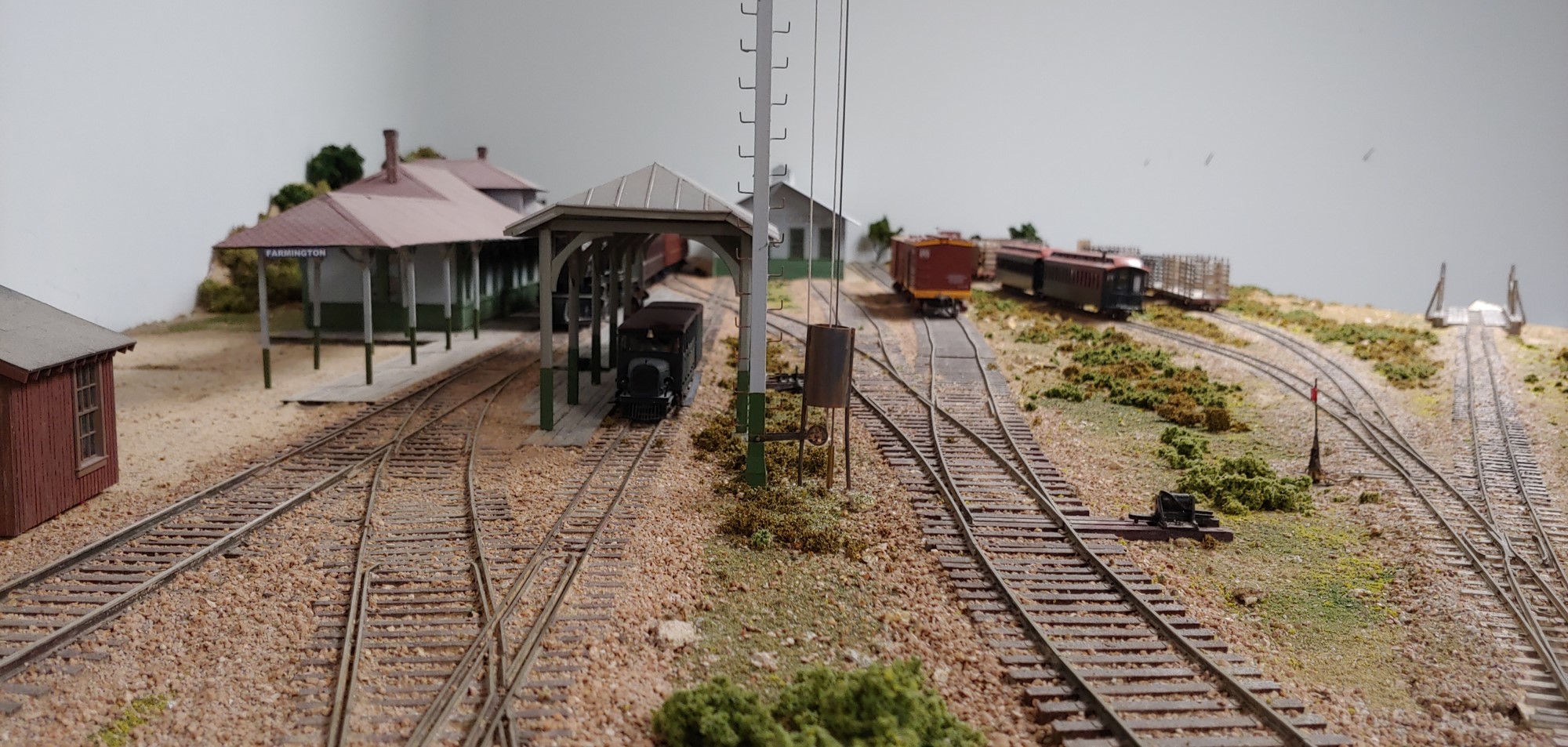
Sort of fun to see the model and the prototype, side by side:
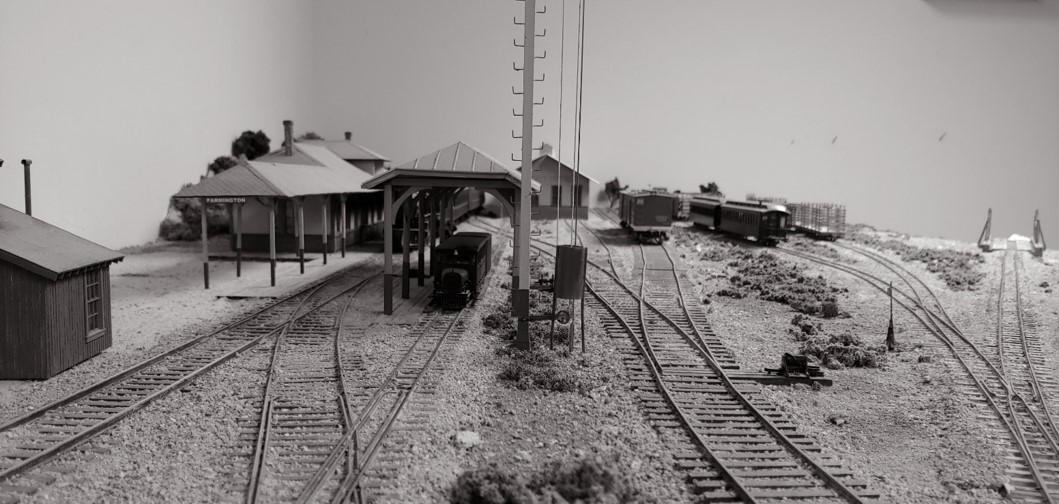

At the south end of the yard is the massive freight station -- what used to be the original covered station. The scratchbuilt structure is largely complete, but I still need to add a lot of shingles on the roof, as well as the clerestory and vents.
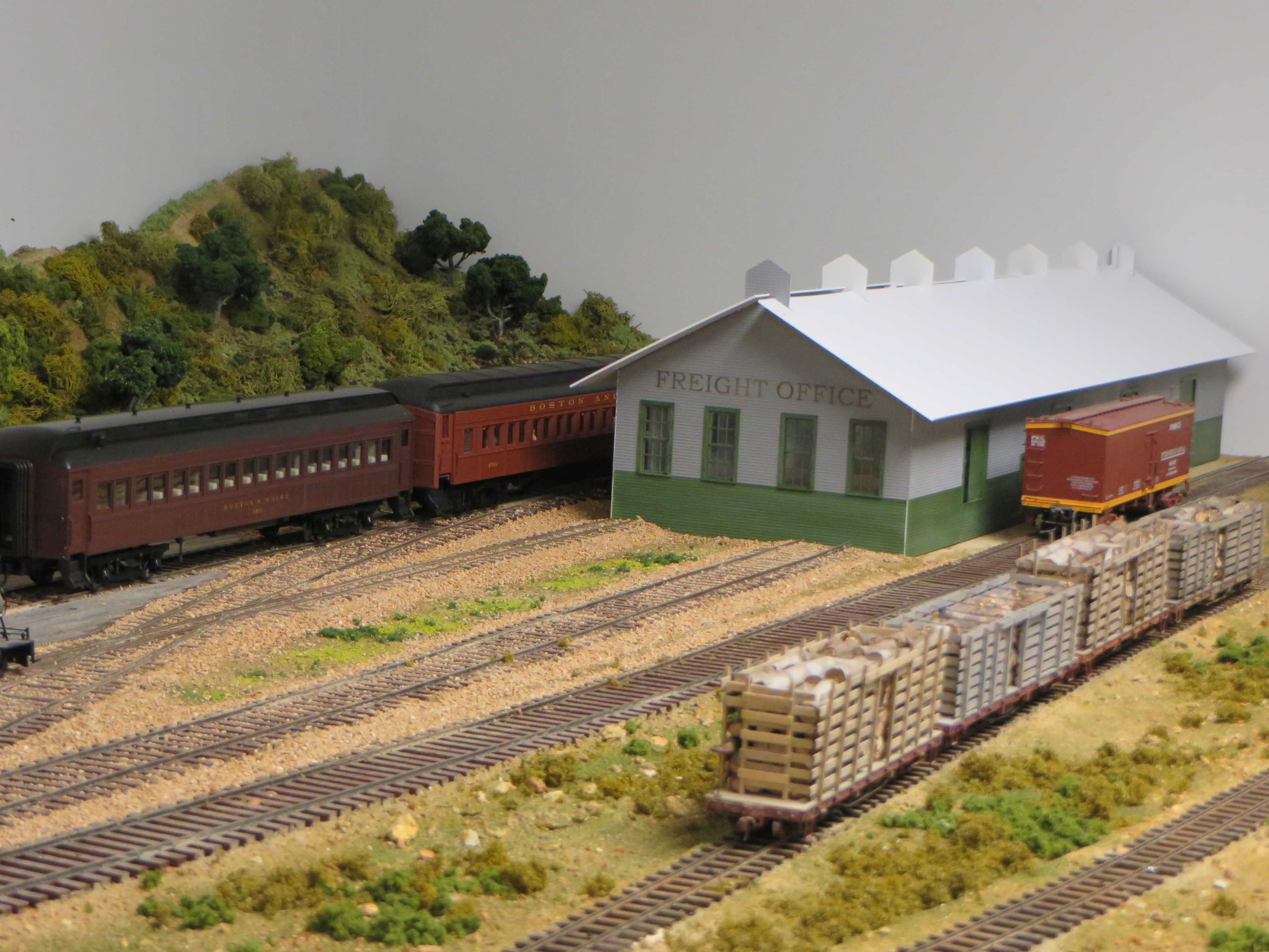
The depot is also scratchbuilt, from styrene. The diamond-pattern shingles on the roof are paper -- at a normal viewing distance, it is impossible to tell that they are not individually applied:
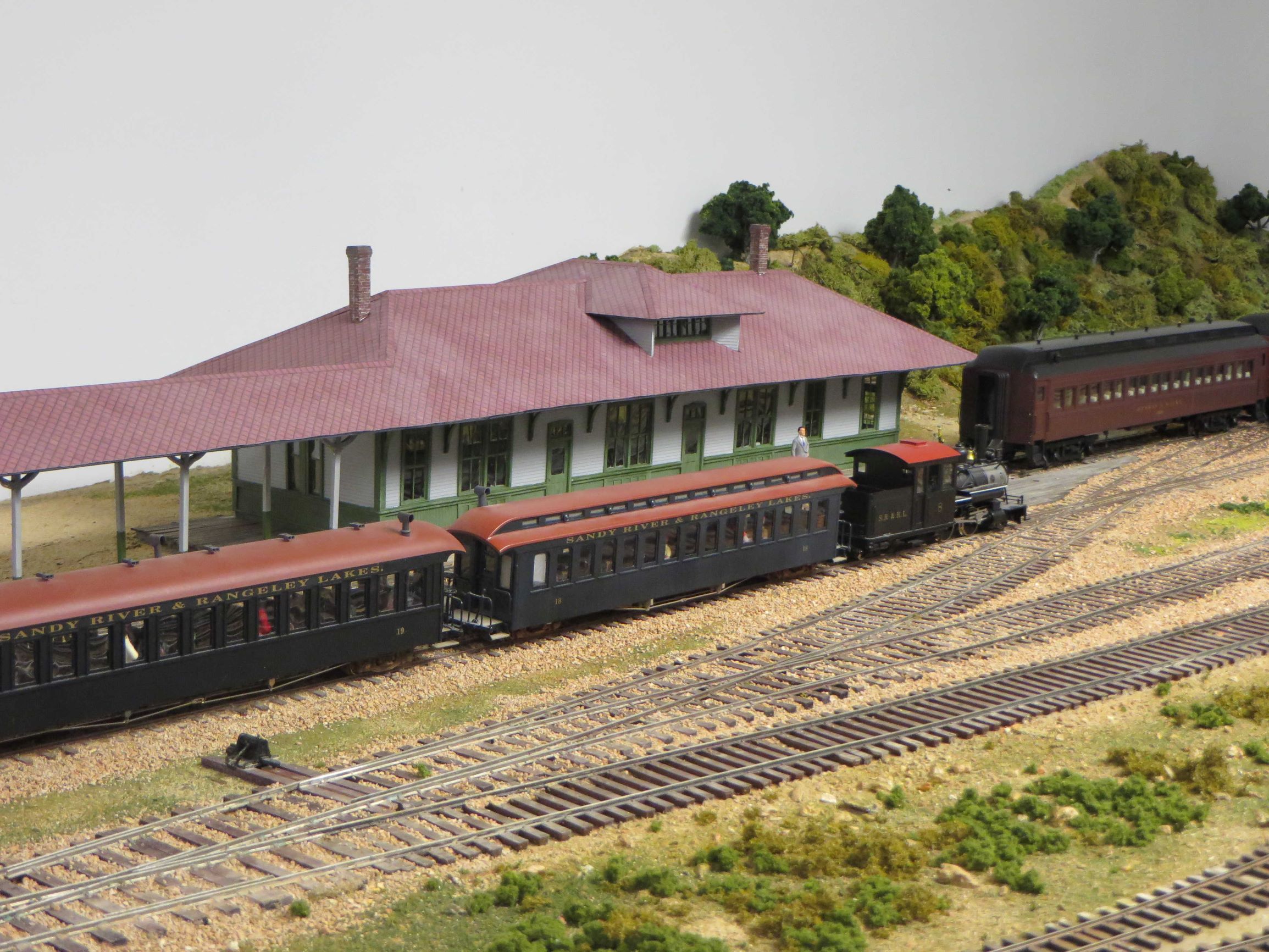
The covered shelter for the SR&RL passengers is also scratchbuilt, mainly from styrene. The curved support brackets were laser cut for me (in plywood) by the great folks at Prawn Designs.
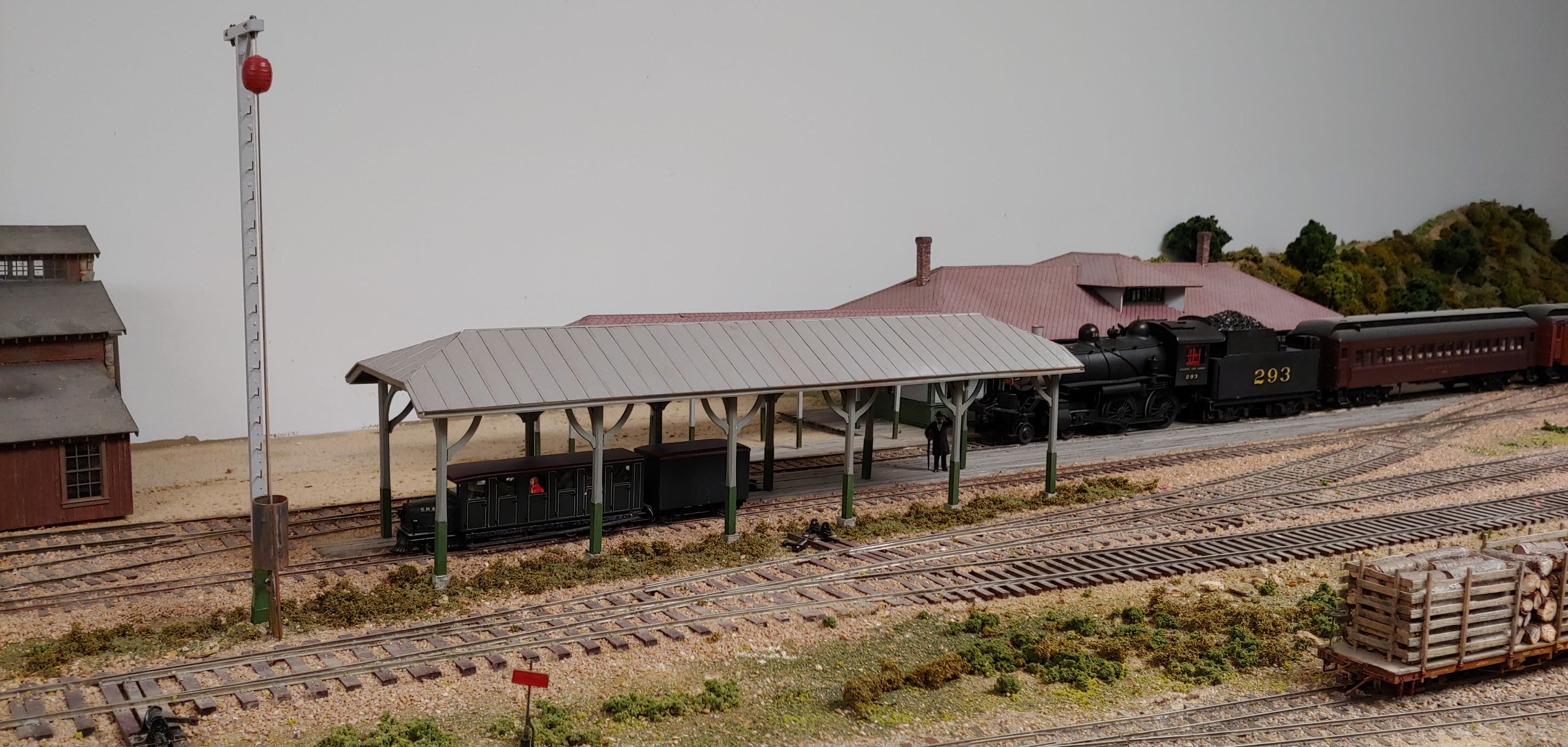
The ball signal had only two indications -- down meant that the Maine Central had the right of way, up meant that SR&RL trains could enter the station area. Here is a VIDEO showing the ball signal in operation, with No. 10 taking the Rangeley Express northbound. The ball signal works with a linear actuator motor, mounted vertically under the layout, driving a piece of music wire affixed to the signal ball, which slides along a fixed rope guide. The ball signals at Strong and Phillips work exactly the same way, although they each have two linear actuator motors. Here is another VIDEO from underneath the layout, showing how the whole thing works.
The turntable, with the freight house and the depot in the background:
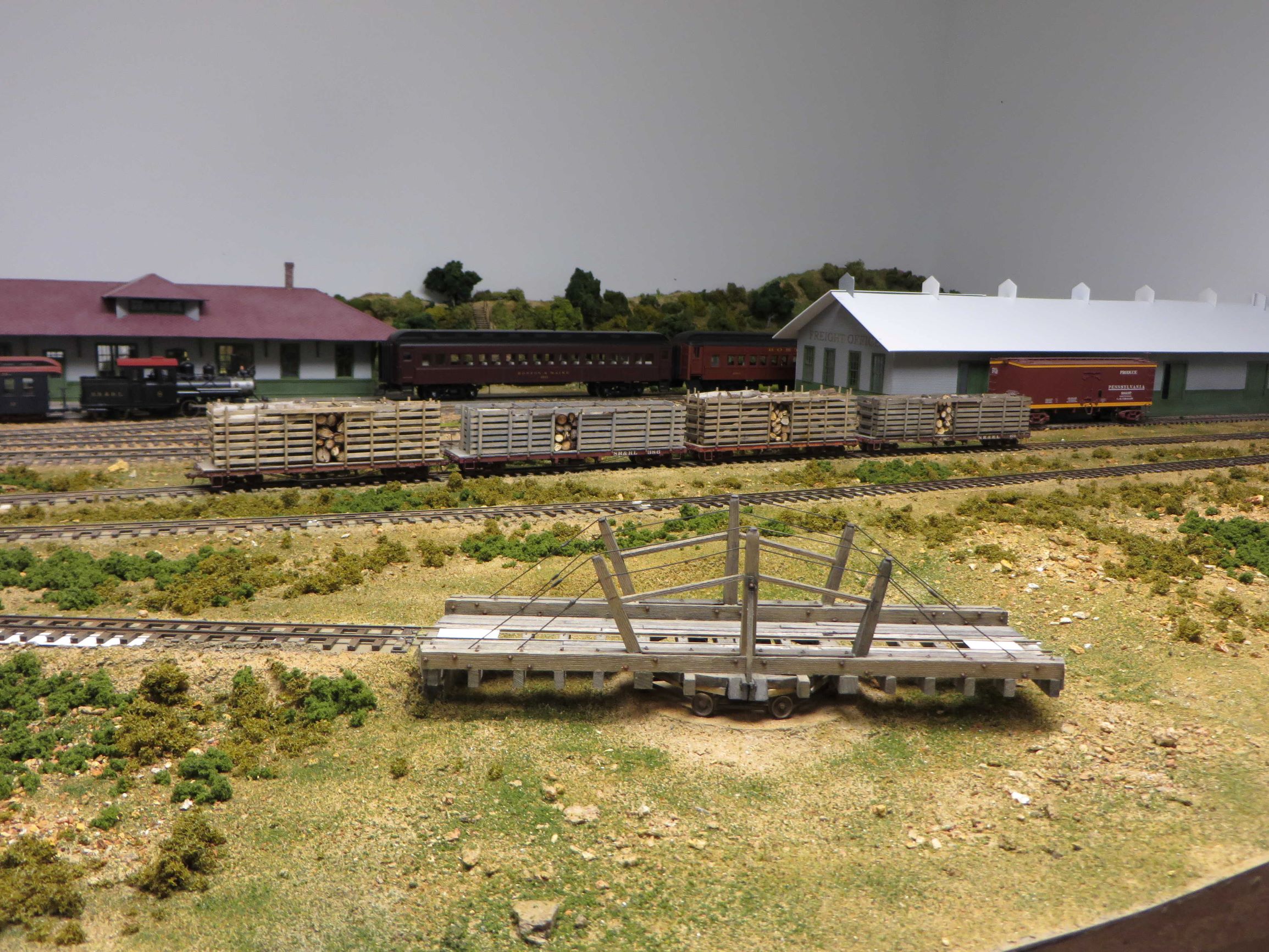
The No. 23 on the turntable, without much room to spare at either end. A good test for guest operators is their ability to position one of the Prairies on the turntable, with the momentum and braking features built into the TCS WOW Sound decoders.
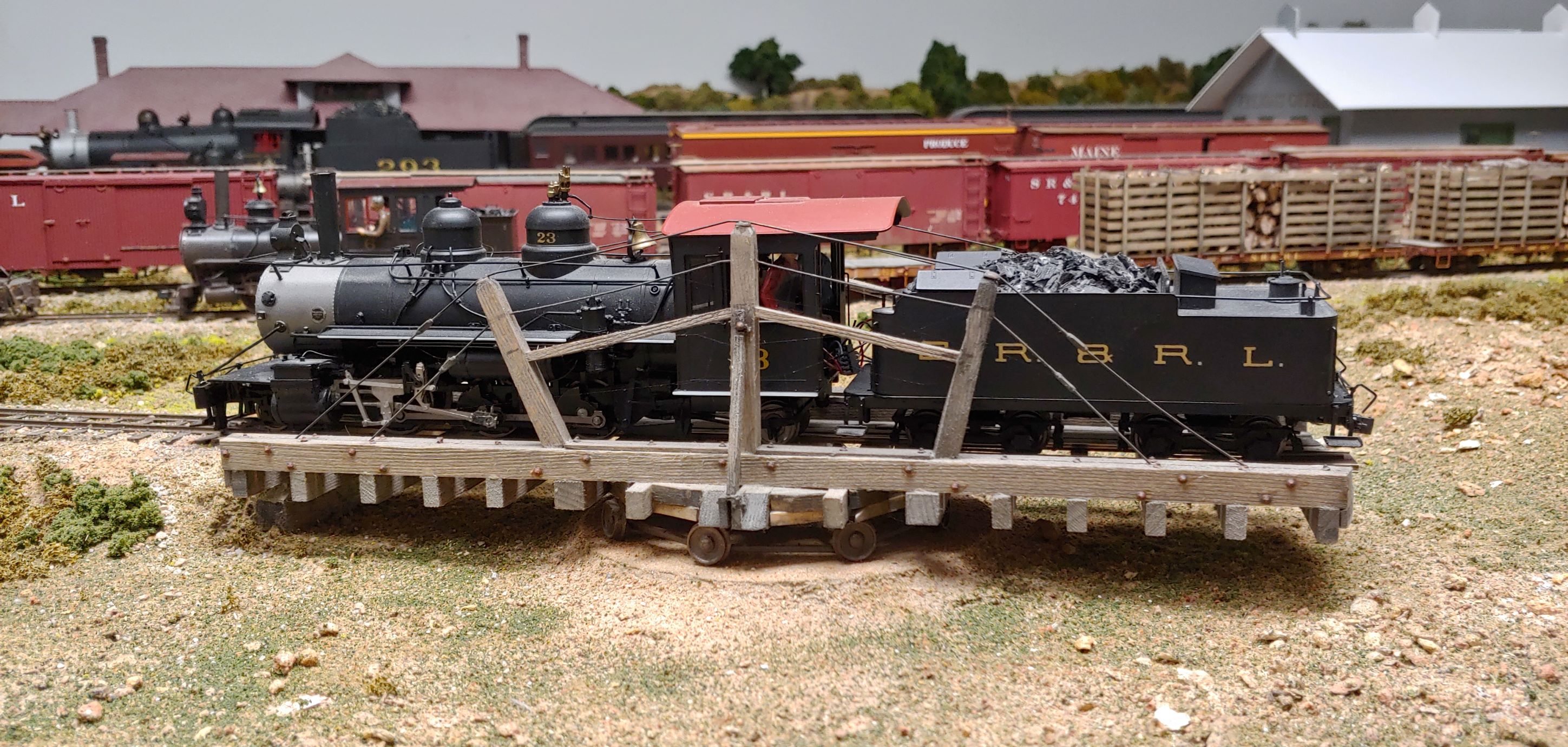
The lower yard -- three tracks, just like the prototype. The actual SR&RL had a similar upper yard, also three tracks. I did not have the space to include it, which makes operations at Farmington a little trickier than the prototype. Otherwise, the SR&RL track layout at Farmington is exactly the same as on the prototype. Note the lineup of standard-gauge cars in the MEC yard


The standard-gauge cars, once offered by Mullet River Model Works -- like this gondola (Chicago & North Western prototype, but lettered for the Detroit & Mackinac) -- are unfortunately no longer being produced, but they are superb. The Bangor & Aroostook gondola at the left edge of the photograph is from Portland Locomotive Works, as is the Maine Central standard-gauge pulp rack that you see in the two photos above.
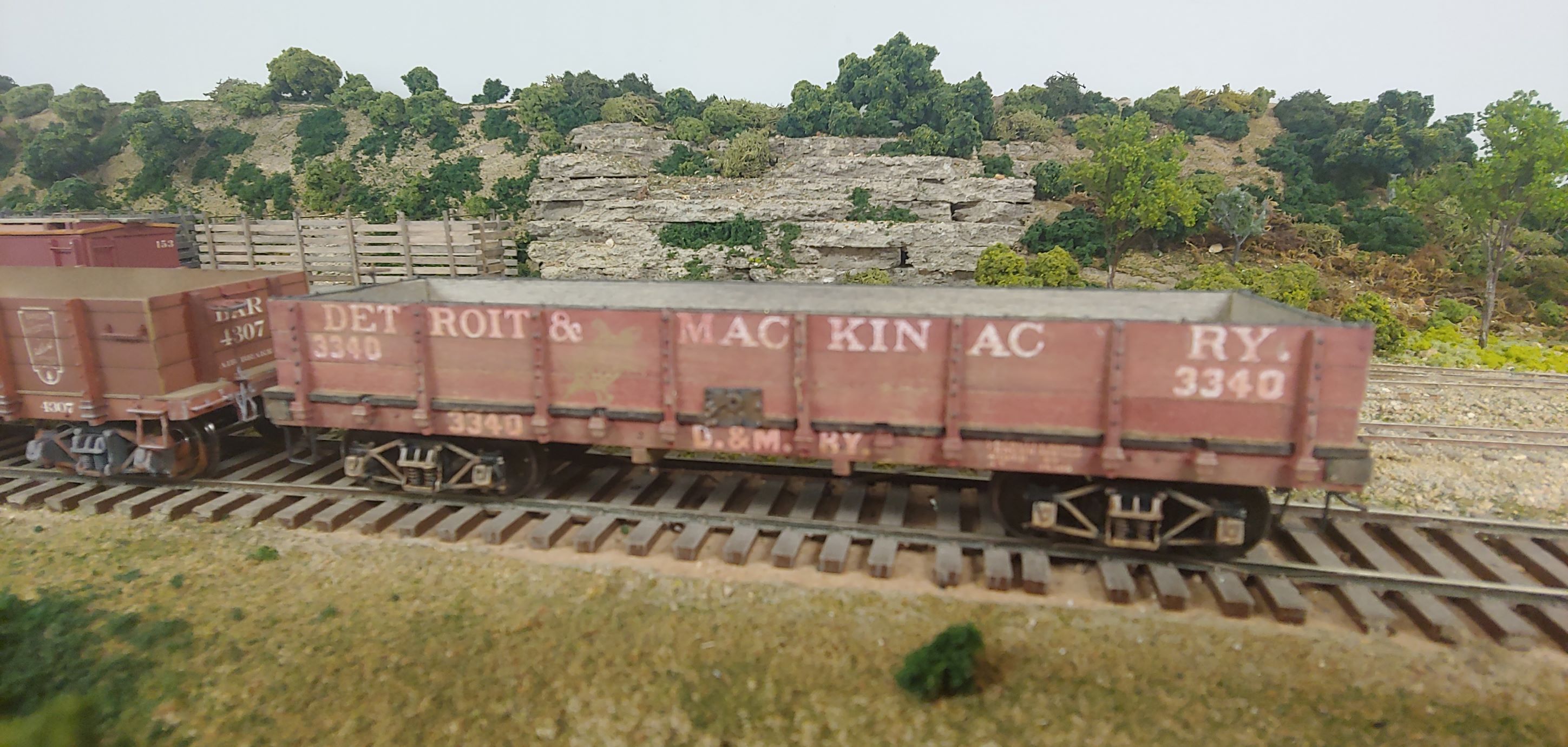
The ramp to the coal shed, which was actually alongside the upper yard on the prototype. In reality, the track continued beyond the top of the ramp, crossed a short access road, and entered a very long elevated wood coal shed -- see pages 128-138 of Jerry DeVos, The Sandy River and Rangeley Lakes Railroad and Predecessors, Volume 5.
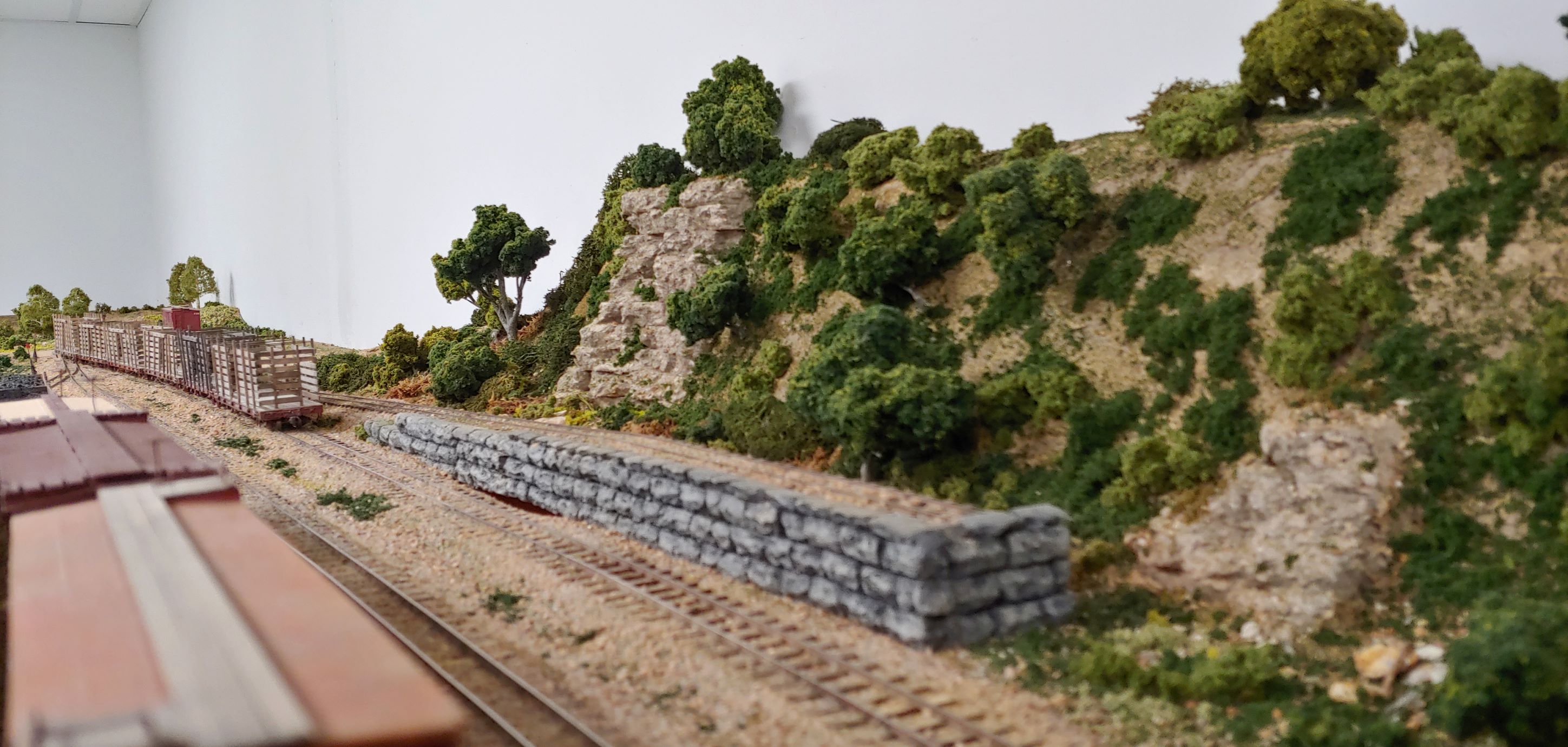
The highway heading north out of Farmington, toward Strong (today's Hwy. 4) drops down the hill and crosses the SR&RL just in from of the Russell & Estes Box Factory. In early years it was a fairly modest structure -- see the photo on page 219 of the DeVos book. That's the version that I intend to model, someday . . .. Note the two armadillos alongside the road, available from Wiseman Model Services -- one of them comes "pre-squashed," as is proper for armadillos:
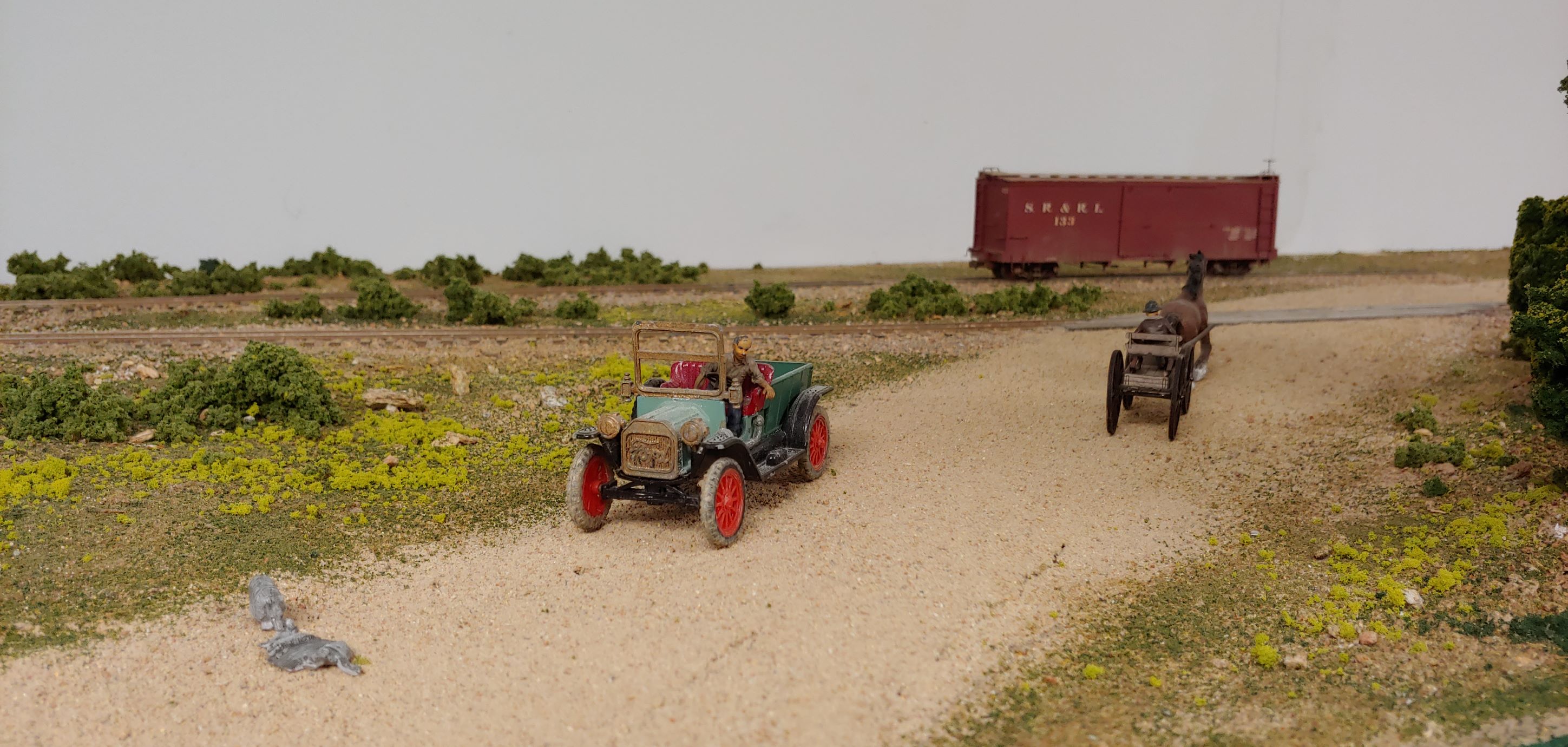
Here are some old photos of Farmington under construction, with all of the On2 track is in place, as well as most of the standard gauge -- including the four dual-gauge diamond crossings:
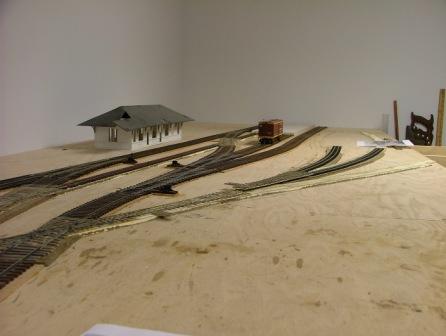

Plenty of pulpwood has arrived in Farmington. The stone and brick buildings are not at all prototypical (I believe that they are from very old kits by Stoney Creek Designs), but they will do until I can scratchbuild the half-dozen or so building flats that will be needed here.

Below, looking north from the north end of Farmington, with the switch to the box factory visible in the center right of each photo. On the left, note the use of plywood in the flat yard areas and PVC spline roadbed in single track areas with undulating scenery. The photo on the right is the same view, with basic scenery and Masonite® profile boards added. The track leading off of the left center of each photo is about to cross the Barker Brook ("Baker Stream") Bridge.


Back to the SR&RL layout main page
©















